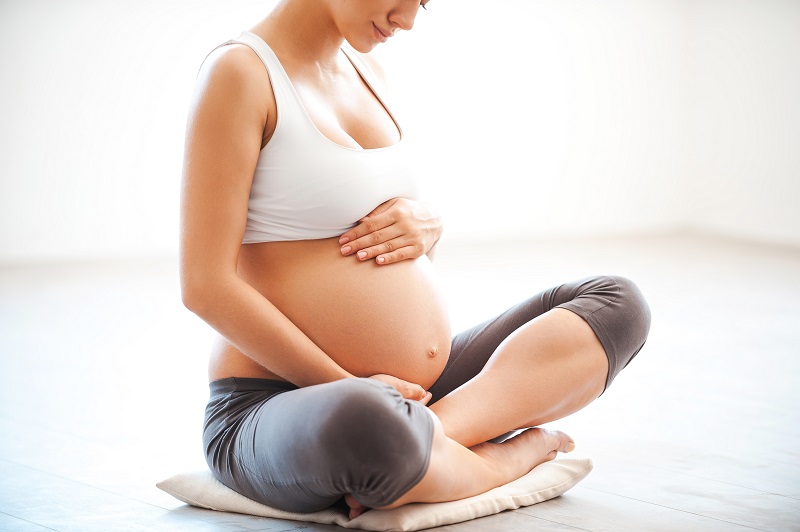Subscribe to our Telegram channel! Useful information about pregnancy and childbirth from leading obstetricians and gynecologists in Moscow, advice and opinions from leading pediatric specialists: t.me/roddomEMC
The pubic bone is one of the three bones forming the pelvic bone. The two pubic bones, forming the pubic articulation (symphysis), form the anterior wall of the pelvis. The pubic bone in women with a regular physique has the shape of a roller about the thickness of a thumb, which is curved and forms a pubic eminence. This bone hangs in a peculiar arch over the entrance to the vagina.
The main cause of pain in the pubic bone is the divergence and increased mobility of the pubic joint. The following terms are used to denote pathological changes in the pelvic joint during pregnancy and after childbirth: symphysiopathy, symphysitis, arthropathy of pregnant women, divergence and rupture of the pubic joint, dysfunction of the pubic joint. The terms "symphysitis" or "symphysiopathy" are most often used.
So, symphysiopathy is a disease associated with marked softening of the pubic joint under the influence of the hormone relaxin, which is produced during pregnancy. The process of softening the interosseous joints is natural, it helps the baby to pass through the pelvis more easily during childbirth. The diagnosis of "symphysiopathy" is made in the case when severe pain appears, the pubic joint swells, stretches strongly, becomes mobile, and the pubic bones excessively diverge. One of the striking, characteristic symptoms of this pathology is that it is impossible to lift a leg while lying down.In addition to acute pubic pain, there are difficulties when walking up stairs, it becomes difficult to turn from side to side on the bed and get up from the sofa, and the gait changes and becomes similar to "duck." According to most doctors, the cause of symphysiopathy is a lack of calcium, an increased concentration of the hormone relaxin and increased physical stress on the bones of the pelvic region. In addition, the development of symphysiopathy can be triggered by a serious sports injury or a fracture of the pelvic bones.
At what stage of pregnancy do they occur?
The disease begins gradually or suddenly during pregnancy, during childbirth, or after childbirth. Most often, women begin to feel pain in the pubic joint area in the third trimester of pregnancy. This is due to the fact that the fusion sites of the pubic bones, their ligaments and cartilage, soften under the influence of the hormone relaxin. This pregnancy hormone naturally softens the bone joints, which is necessary to facilitate the passage of the baby's pelvis and birth canal at the time of delivery.
Some women start complaining of pelvic bone pain some time after giving birth. This may be the result of traumatic childbirth (the imposition of obstetric forceps, dystocia of the shoulders, excessive hip dilation during childbirth, etc.) or physical exertion (lifting a heavy baby carriage up the stairs, prolonged motion sickness in the arms of a well-fed baby, etc.). It is recommended to limit physical exertion, wearing an orthopedic bandage, consultation the traumatologist. The complaints usually resume after the next pregnancy. In a small part of the patients, the pain persists for a long time.
When can this be considered the norm, and when not?
Obstetricians and gynecologists do not consider a slight soreness of the pubic joint to be a pathology, but if the pain is acute, constraining the movements of the pregnant woman, accompanied by edema, then we can talk about pathology. The pain can be quite severe and especially manifest itself while walking, turning the body to the right and left in a sitting position and even lying down.In this case, you need to urgently consult a doctor and undergo an ultrasound diagnosis (ultrasound) to determine the size of the discrepancy between the pubic bones.Magnetic resonance imaging (MRI) is also used to assess the condition of the symphysis, bone tissue, and soft tissues.
Ultrasound determines the degree of divergence (diastasis) of the pubic bones. The severity of the clinical picture largely depends on the degree of divergence of the pubic bones, and therefore there are three degrees of divergence of the pubic branches: at the first degree – by 6-9 mm, at the second – by 10-20 mm, at the third – by more than 20 mm. The severity of the symptoms of the disease varies from mild discomfort to unbearable pain.

How can the pain be relieved?
There are some recommendations that will help reduce bone pain during pregnancy if it is caused by the divergence of the pubic bones. It is mandatory to wear a bandage, especially in later pregnancy. The bandage takes over most of the load, thereby relieving the pressure on the pubic joint. Limitation of heavy physical exertion is indicated for any manifestations of pain, lying down more often, walking less and staying in a sitting position for no longer than 30-40 minutes. In severe cases, before and sometimes after childbirth, a woman may be shown strict bed rest. Moreover, the bed should not be rigid and flat.
Since the appearance of symphysiopathy is associated not only with a high production of the hormone relaxin, but also with a lack of calcium in the body, the expectant mother is prescribed calcium supplements and complex vitamins for pregnant women, which contain all the necessary vitamins and trace elements in the right amount and proportions. There is evidence that pain decreases during acupuncture and physiotherapy procedures.
In particularly severe cases of symphysiopathy, the pregnant woman is hospitalized.
What is the danger of this condition?
The occurrence of symphysiopathy is due to several reasons. These are the lack of calcium in the body of the expectant mother, and an excessive amount of the hormone relaxin, and individual features of the woman's body structure, and possible hereditary or acquired problems of the musculoskeletal system.
With an unexpressed clinical picture of the disease, with the expansion of the pubic fissure to 10 mm, normal pelvic size, and a small fetus, childbirth can be carried out through the natural birth canal, avoiding the use of physical force, such as taking a Crystal. With severe stretching of the pubic joint, pain syndrome, especially with anatomical narrowing of the pelvis, and a large fetus, there is a risk of rupture of the pubic joint, and cesarean section is the method of choice in this case. This is due to the fact that during natural delivery, the bones can disperse even more and the woman will subsequently not be able to walk at all.
Prevention
A healthy woman's body is able to cope with all the difficulties of pregnancy on its own. First of all, the expectant mother should include enough calcium-containing foods in her diet, as well as take vitamins for pregnant women.
For the prevention of symphysiopathy, the use of an antenatal bandage is recommended, which supports the abdomen and prevents excessive stretching of ligaments and muscles. Preventive wearing of an antenatal bandage is usually recommended from the 25th week of pregnancy, when the belly begins to actively grow.
In order to ensure the plasticity of ligaments and muscles, as well as the flexibility of joints, it is necessary to do special exercises during pregnancy planning. Yoga gives good results.







.webp)



.webp)



.webp)
